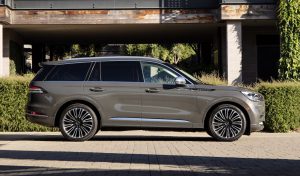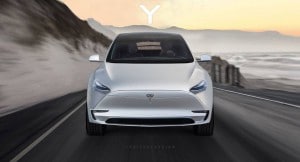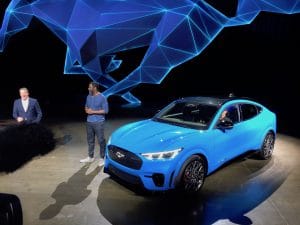I recently attended a holiday party in which each of us was asked to make predictions for the year ahead. Among my own prognostications I suggested that 2020 will finally be the year of the electric vehicle – or at least the year in which demand finally starts to gain some serious momentum.
The good news for EV advocates is that 2019 already has begun moving in the right direction. Tesla sales will set a new record and, while a few products, notably the Jaguar I-Pace, haven’t done nearly as well as expected, we’re likely to see combined demand for hybrids, plug-ins and pure battery-electric vehicles, or BEVs, set an all-time record of more than 5% of the U.S. new vehicle market this year.
That’s still not an earth-shattering number, of course, but there are reasons to be optimistic about the year ahead – if for no other reason than the burst of new products coming to market as the decade begins, everything from the Tesla Model Y to the Ford Mustang Mach-E.
(Nikola Motors claims it’s found the “Holy Grail” of batteries: twice the range, half the cost.)
There already are a substantial number of battery-based vehicles on the market, more than many folks might have realized. Tesla now offers the Models S, X and 3, Jaguar the I-Pace, Audi got into the all-electric market with its first e-tron model, and Nissan expanded the options for Leaf buyers by adding the longer-range Leaf Plus model.
The latter marks a significant upgrade, more than doubling the distance the Nissan BEV can manage between charges. That helps address one of the most significant challenges the industry faces in trying to get electrified vehicles into the mainstream. There are still a number of shorter-range models in U.S. showrooms. The Volkswagen e-Golf manages a mere 125 miles per charge and, even with a big update this past year, the BMW i3 can also run only about 153 miles before having to plug in again.
There’ll be a few exceptions going forward, such as the Mini SE – which will likely only match the BMW i3’s range. But that’s going to be the exception, manufacturers all but universally pushing their new products over the 200-mile barrier. Some are even hitting 300 miles – including long-range versions of those Tesla products and the Ford Mach-E with its extended-range battery pack.

Porsche’s Taycan is one of numerous electric vehicles that will be marketed through other VW brands, a total of about 50 BEVs due by 2025.
What’s equally significant is that automakers are broadening the potential appeal of their new products. The first generation of electrified vehicles, including the Toyota Prius hybrid, Chevrolet Volt plug-in hybrid, and the Nissan Leaf BEV, were largely pitched as green alternatives to conventional gas-powered products. But there were plenty of trade-offs, including performance.
Tesla was the first to show potential customers that EVs could be fun to drive in their own right, especially when it introduced the neck-snapping Ludicrous Mode.
This coming year will see more and more emphasis on performance when products such as Tesla’s next crossover, the Model Y, the Mustang Mach E and the Porsche Taycan roll into showrooms. All three will blast from 0-to-60 in well under four seconds, depending upon which versions you choose, rivaling some of the fastest traditional products on the market.
(GM “on track” to meet 20 EV target by 2023)
The wave of new EVs will offer far more options than ever before when it comes to body styles. There’ll be sports cars, like the Taycan, and plenty of SUVs in various sizes, including that Mach-E, the Volkswagen ID.4, the Audi e-tron Sportback and a new, all-electric SUV from Cadillac.

The all-new 2020 Lincoln Aviator puts the emphasis on performance with its plug-in Grand Touring option.
While the spotlight will be on BEVs, there’ll be other options for buyers who’d like to electrify. That includes plenty of conventional hybrids, as well as micro-hybrids that use 48-volt systems to deliver a boost to performance and fuel economy.
For those who’d like to handle commutes and chores in all-electric mode but also want the freedom to travel longer distances without worrying about finding a public charger, there also will be a number of new PHEVs, including the first plug-in version of the Toyota RAV-4, the U.S. market’s best-selling crossover, as well as the new Lincoln Aviator Grand Touring.
(Electrify America, Bank of America plan to let you charge where you bank and shop.)
Significantly, as they’re doing with their new BEVs, automakers are pushing performance with their new PHEVs, as well. The plug-in RAV-4 and Aviator will both be the fastest and most powerful versions offered.
I don’t want to suggest that EVs will truly go mainstream in 2020. If anything, demand is likely to grow rather slowly during the first half of the year. For one thing, Tesla will completely lose all federal incentives on its products come January 1, while General Motors is seeing its tax credits phase out over the coming year. Nissan will also begin seeing a phase-out as it crosses the 200,000 sales threshold set by Congress. There’s been a call to raise that bar but Washington lawmakers haven’t followed through and there’s a possibility the White House would veto such a measure, anyway.
There are other obstacles. EVs still carry higher pricing than comparable gas-powered models and, though that’s coming down, parity is not likely until at least mid-decade.
There’s also the issue of public charging. The reality is that most owners plug in at home, but BEV and PHEV owners are going to need access to charging stations in order to use their vehicles on longer trips. The good news is that dozens of new public chargers are being “electrified” each month, but there are still only a fraction as many of those stations as there places to fill up with gas.
The reality is that electrified vehicles will remain a niche in 2020, but with range growing steadily longer, more charging stations opening, prices falling and – perhaps most importantly – lots of new products coming to market, the coming year should see enough growth in demand to demonstrate that EVs really are on the way to becoming a viable mainstream alternative.




For me the biggest problem with BEVs is, and remains, the recharging times. My question always- and the magazines and websites never seem to address it- is this: if my car can go 250 miles on a charge, for example, how long does it take to recharge it to go another 250 miles?
You many not understand the terminology. If you look, the charging times are usually given – look for the “from empty to 80%” number. Sometimes it is 10-80% or even to 90%.
In practical use on long trips waiting around as the car gets the last little bit of energy to reach 100% doesn’t make sense. Charging rates are fastest at ideal temperatures under 80% charge. Many public fast chargers limit the charging rate due to various factors…
So a 250 mile range on full would be around 200 if you use optimal charging times – which makes for the fastest travel.
We routinely note the 80% slowdown, Calvin. In fact, some batteries can continue charging beyond 80% at a faster rate, including the new Audi e-tron. But most automatically start to slow charging at that point.
Paul E.